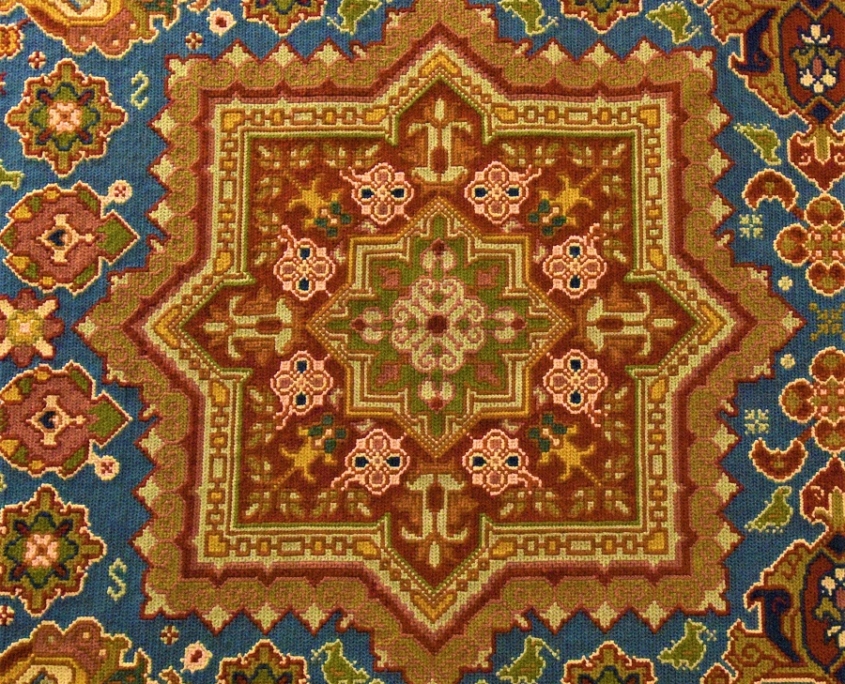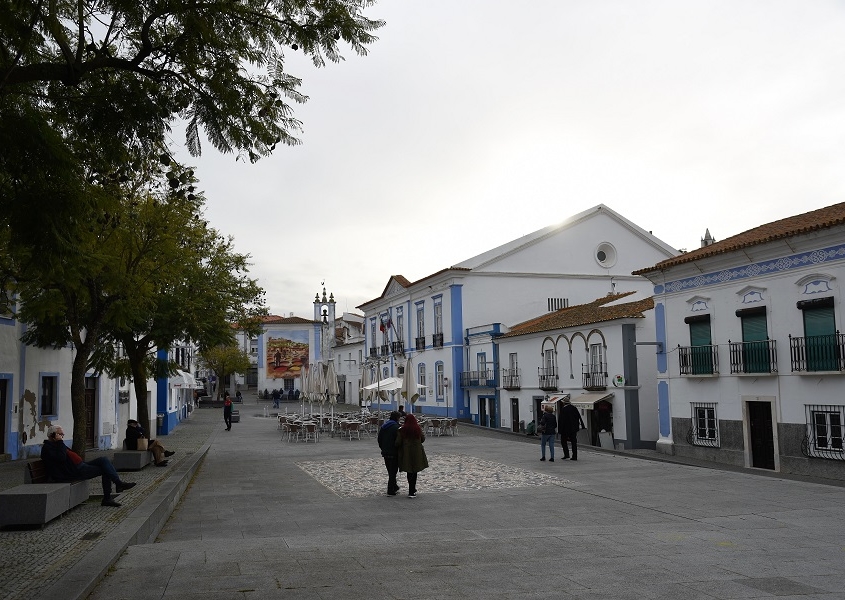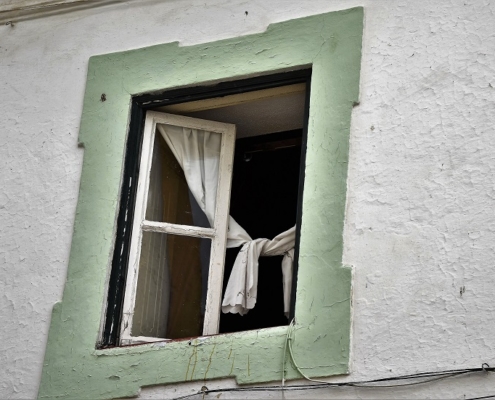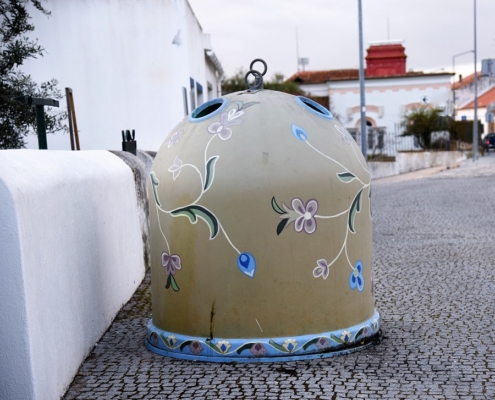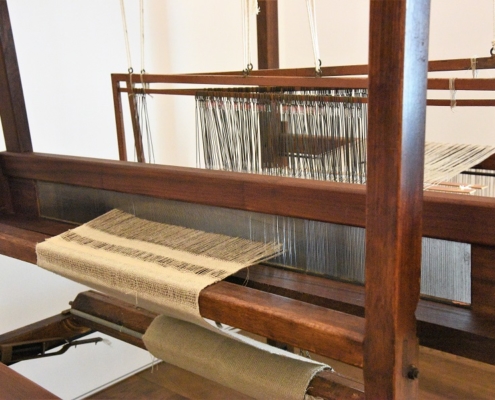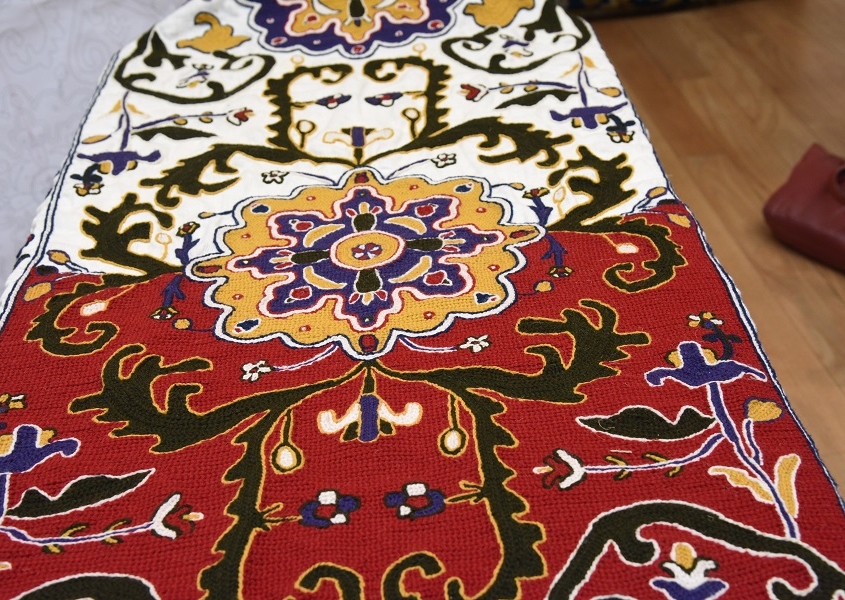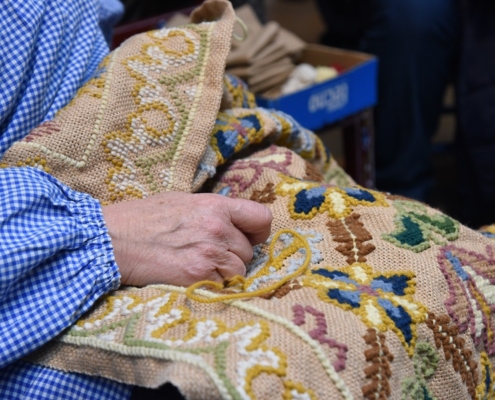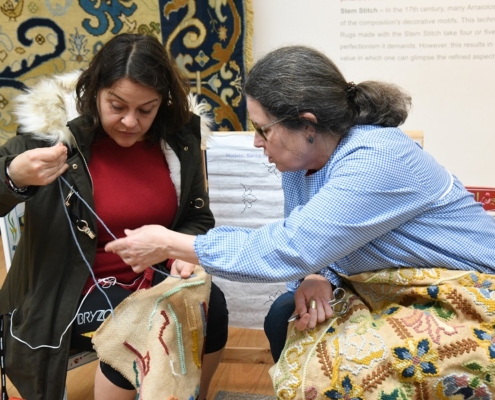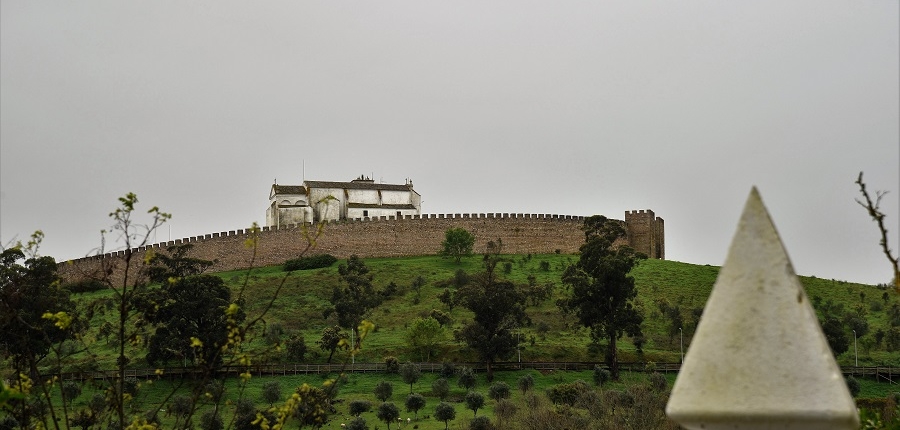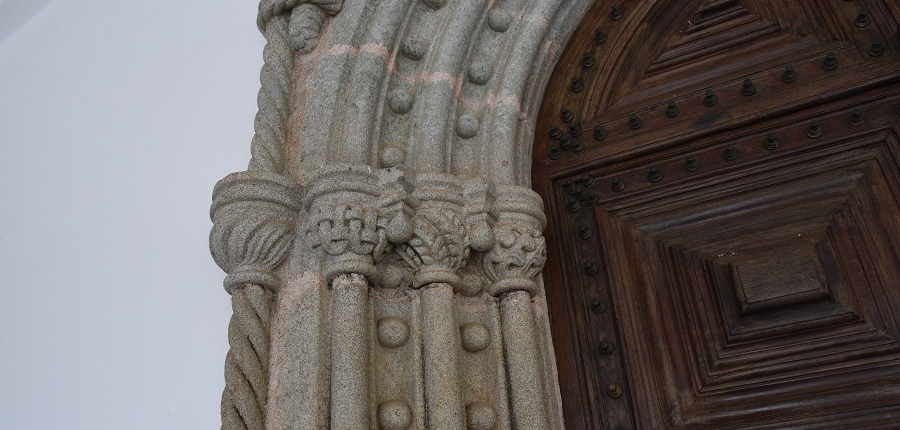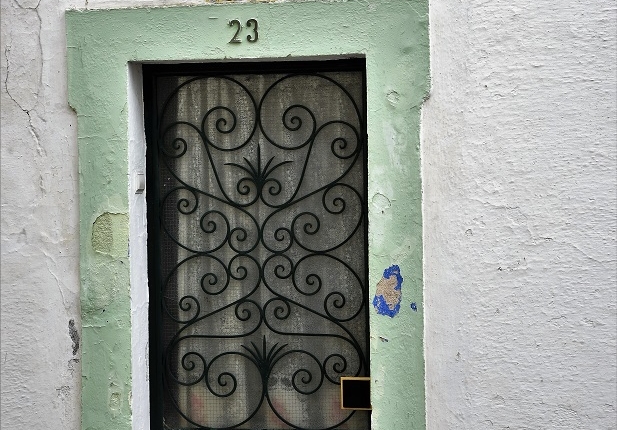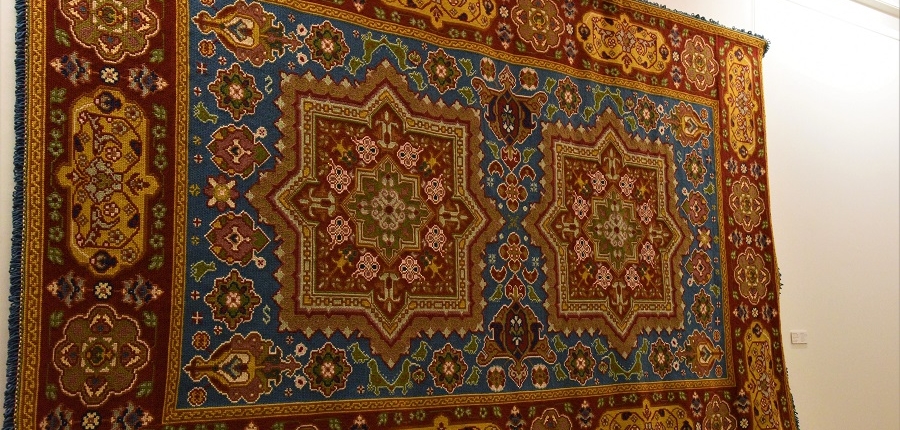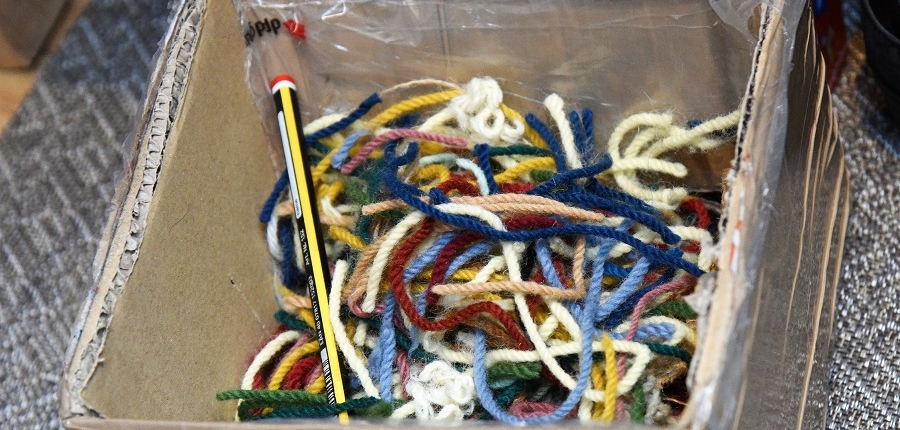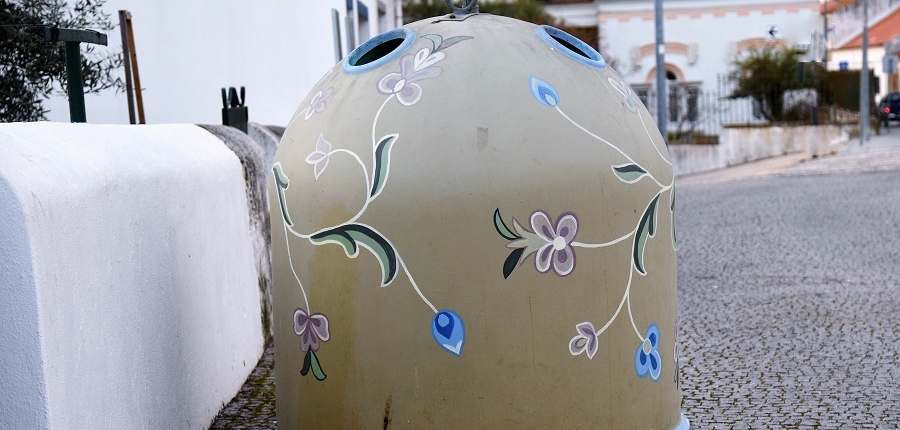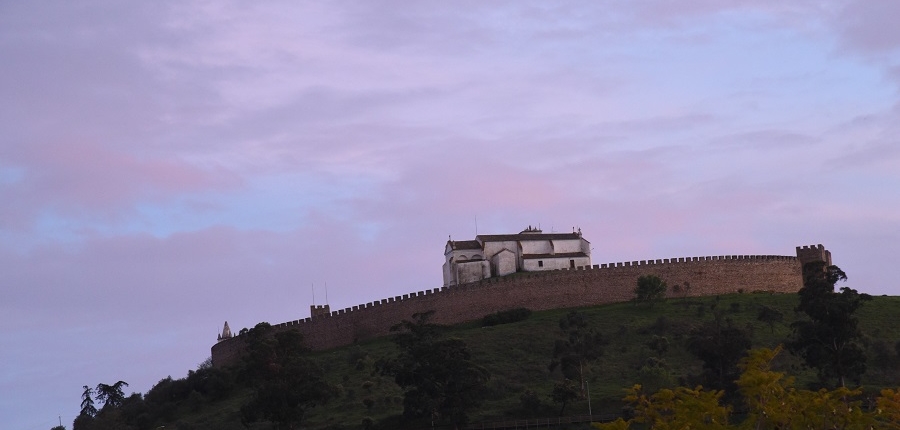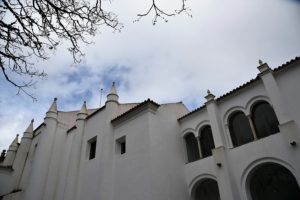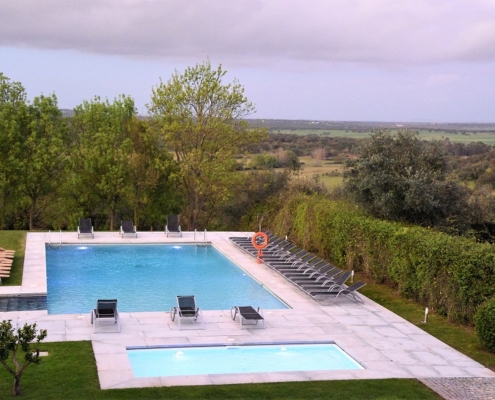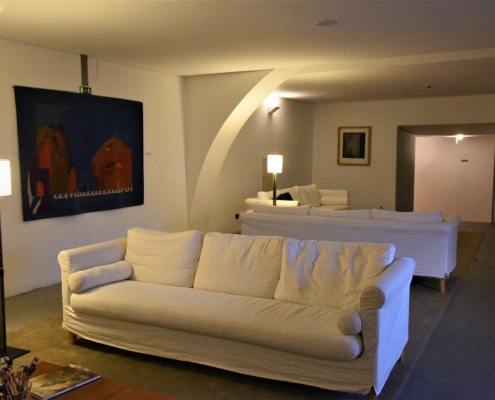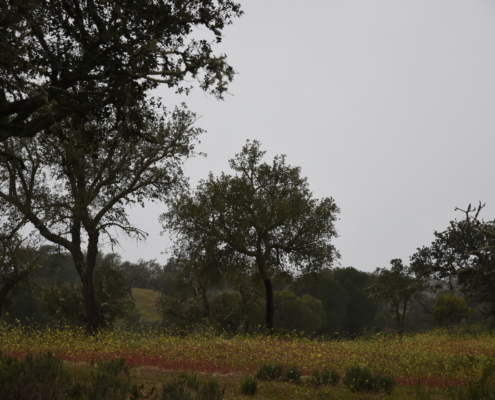The magic carpets of Arraiolos, in the shadowless lands of Alentejo.
Arraiolos is a charming village of white houses.
It is located 1h30 drive from Lisbon, built at the foot of a small castle with a surprising circular wall.
The carpets of Arraiolos make the reputation of this big charming village. Carpets that tell a whole story, more than 5 centuries old. That of a decorative influence, a taste for beauty and a passion for discovery.
For a long time it was believed that it was the Arabs who occupied the Iberian Peninsula who brought with them this exotic carpet art and passed on their know-how. This is not the case, at least in these aspects. In reality, the carpets of Arraiolos were born under the influence of Persian and Turkish carpets.
These carpets were particularly prized at the time of the discoveries, as early as the 15th century. Kings, bishops and nobles were given them for a golden price.
There are no references to these carpets from Arraiolos before the end of the 16th century.
Researchers believe that they make carpets long before that, or at least they have been known how to make them for a longer period of time.
It is known that Arraiolos was a centre for wool processing. And mainly dedicated to dyeing.
In fact, under the pretty little central square of Arraiolos, old dye vats used between the 13th and 15th centuries have been discovered.
The vats, which covered a large area, are still there, but covered with a modern pavement.
Almost a century passed between the end of the use of the vats and the first references to Arraiolos carpets, without being able to explain what happened in that time.
Persian and Turkish carpets were extremely prized.
But bringing them from the East was expensive.
In turn, the bourgeois and merchants wanted their carpets. Little by little, embroiderers created their Arraiolos carpets, copying Persian models. However, they remain luxury products.
Then begins the embroidery of Arraiolos on a large scale. Women and children embroider the designs which will change a lot in the course of time. But still today, the Arraiolos carpets have kept the initial structure of the Persians: large central motifs symbolizing the living, 4 corners representing the 4 elements, and various theological references. They are in principle bordered with fringes.
Demand was intense until the middle of the 20th century. In the 80’s, art became scarce, especially because carpets were made all over in Portugal. They are not Arraiolos carpets but carpets made in the Arraiolos way.
The Arraiolos Carpet Interpretation Centre.
In the central square of the town it is a real source for understanding this very special art and getting acquainted with the heritage.
The embroidery stitch used for the carpets is commonly called “Arraiolos stitch”. In reality it is an oblique half cross stitch, derived from cross stitch. This point has existed at least since the 12th century, and an embroidery made up of this stitch and from this period attests to this in Barcelona.
This stitch is said to be Slavic in origin, and to have become established in the Iberian Peninsula. The Arabs who occupied Spain and Portugal would have popularized it.
The 17th and 18th centuries are under the oriental influence.
Geometry, colours and motifs still evoke the symbolism used in these lands.
From the second half of the 18th century, there is a transition period and oriental motifs are mixed with the regional tradition. Flowers, animals, characters make their appearance.
Since the 19th century onwards the carpets of Arraiolos are of popular and European influence with very floral motifs, less erudite.
The Arraiolos carpet is one of the oldest expressions of Portuguese decorative art.
The technique, the style and the construction of the carpet are perfectly identified.
At Arraiolos, the carpet is all of this together. If its patrimonial richness is recognized, it still lacks a label for this art to be protected.
Only a few embroiderers still know how to work for hours on these magnificent carpets. A long and tedious work and badly paid.
Several shops and workshops propose carpets in Arraiolos.
The models can be classic, Persian, or original. Custom-made is precious: the dimensions are adapted to modern apartments and houses.
Contrary to popular belief, the carpets in Arraiolos are accessible. It is obviously not a purchase that can be made every day.
Visiting the big town and buying a carpet is probably the best service to give to Arraiolos.
The outdoor swimming pool allows you to enjoy a beautiful view of the hills planted with holm oaks and cork oaks.
We can find also an indoor swimming pool, a spa, a sports hall and a tennis court.
The various rest rooms are very pleasant. The old huge fireplace is still working and it brings a cosy side that is very much appreciated.
Decorated with care, recalling the carpets of Arraiolos in a discreet way the Pousada, Historical category, is pleasant.
Do not miss the beautiful chapel of the old convent and the two fountains that frame the building.
We like
The location and the old convent give a mysterious air to the place. The friendly and impeccable service. The minimalist but pleasant rooms.
We like less
Breakfast. A toaster in balance and which did not work, a difficult restocking of scrambled eggs, a medium coffee, little fruit, few regional products. And an overabundance of cakes that did not find amateurs.
Pousada de Arraiolos – Nossa Sra. da Assunção, 7044-909 , Tel +351266419340
Where to eat
O Alpendre
O Alpendre is the most famous restaurant in the centre of Arraiolos. It offers a good regional cuisine. Copious and good. Fast service despite the number of seats. Note, when entering the restaurant, the wine cellar offering wines of the Alentejo region.
Bairro Serpa Pinto 15, Arraiolos
Telefone: 266 419 024
https://www.facebook.com/Restaurante-Alpendre-526812717482491/
The discovery of Arraiolos and its magnificent carpets would not have been possible without Terras sem Sombras.
This cultural programme, which focuses on the art and heritage of Alentejo, offers numerous outings from January to June each year and allow to discover a region rich in heritage and land, with populations attached to their territory. Biodiversity goes hand in hand with classical music.
Consult the programme https://terrassemsombra.pt/
Warm thanks to the town hall of Arraiolos. The small town has a sense of welcome.

